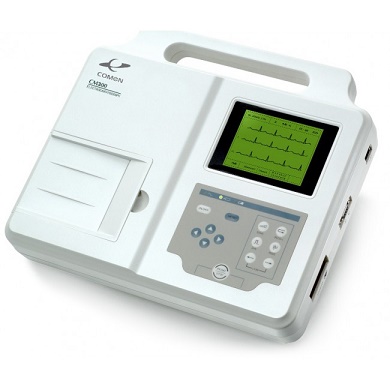Thermal printer (or direct thermal printing) is a digital printing process which produces a printed image by selectively heating coated thermochromic paper, or thermal paper as it is commonly known, when the paper passes over the thermal print head. The coating turns black in the areas where it is heated, producing an image. Two-colour direct thermal printers can print both black and an additional colour (often red) by applying heat at two different temperatures.rmal transfer printing is a very different method that uses a heat-sensitive ribbon instead of heat-sensitive paper, but uses similar thermal print heads.
A thermal printer comprises these key components:
- Thermal head: generates heat; prints on paper
- Platen: a rubber roller that feeds paper
- Spring: applies pressure to the thermal head, causing it to contact the thermosensitive paper
In order to print, thermo-sensitive paper is inserted between the thermal head and the platen. The printer sends an electric current to the heating elements of the thermal head, which generate heat. The heat activates the thermo-sensitive coloring layer of the thermosensitive paper, which changes color where heated. Such a printing mechanism is known as a thermal system or direct system. The heating elements are usually arranged as a line of small closely spaced dots.
The paper is impregnated with a solid-state mixture of a dye and a suitable matrix; a combination of a fluoran leuco dyeand an octadecylphosphonic acid is an example. When the matrix is heated above its melting point, the dye reacts with the acid, shifts to its colored form, and the changed form is then conserved in metastable state when the matrix solidifies back quickly enough (a process known as thermochromism).







Reviews
There are no reviews yet.